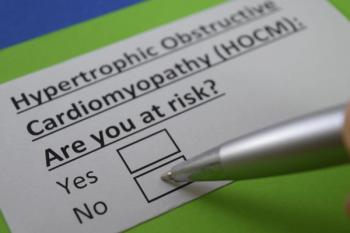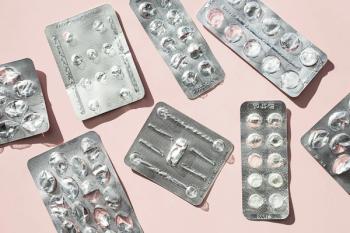
Big-Box Pharmacy on the Rise
Big-box merchandisers, including supermarkets, employ thousands of pharmacists and offer higher-than-average salaries.
If you work in retail pharmacy, there is a good chance your next job won’t be in a traditional store. You will still be a pharmacist practicing pharmacy, but your pharmacy may be one of many departments in a mass merchandiser such as Walmart or Costco, or part of a grocery chain like Albertsons or Kroger.
These big box retailers are adding more pharmacist jobs than traditional pharmacy chains. And mass merchandisers are paying the highest pharmacy salaries in the industry.
“For the fifth consecutive year, pharmacists at mass merchants had the highest average salaries in the industry, earning a full-time average of $122,390 in 2016,” said Adam Fein, PhD, President of Pembroke Consulting. Pharmacist salary data for 2016 were published by
The average salary for all pharmacists was $120,188, an increase of 0.6% over 2015, Fein continued. Employee pharmacists working in chain, independent, and long-term care pharmacies took home $120,050-0.4% more than in 2015.
Mass merchandiser pharmacists earned more on average, but they are also the only group who earned less than they did in 2015, down 0.4%.
Grocery chain pharmacists earned slightly less, $118,860. But supermarket pharmacists had the largest salary gains, up 2.6% over 2015.
Fein added that pharmacists who owned their own stores took home about $200,000 in 2015, the last year for which data on independent pharmacies are available.
Up next:
Follow the Money
Fein’s 2017 Economic Report on U.S. Pharmacies and Pharmacy Benefit Managers shows five big box chains among the top 15 prescription retailers by dollar value.
Mass merchant Walmart is number four and Costco Wholesale is number 13. On the grocery side, Kroger is number seven, Albertsons number eight, and Ahold USA number 14.
Between them, the five big boxes account for 10% of the $412 billion spent on prescription products in the United States in 2016.
Related article:
That’s only a quarter of the prescription revenues racked up by the top three sellers-CVS, Walgreens, and
So why are big boxes paying bigger bucks or offering larger salary increases than traditional pharmacy chains? It’s all about economics.
“Big boxes, grocery chains, and mass merchants, are growing pharmacy because that’s where the money is,” explained industry consultant Gary Ellis, president of
“The pharmacy itself isn’t a huge money maker, it just has to break even,” Ellis continued. “But if you’re a grocery store, every new script is worth $43 in additional sales in other departments. It’s the same reason CVS and Walgreens have been expanding their front ends. The profit is all in front-end sales and every prescription that walks in the door means more front-end sales.”
Large front-end sales give big boxes more flexibility in pharmacist compensation than their pharmacy chain or independent competitors. In 2016, pharmacy wholesaler McKesson noted that the typical independent gets 90% of revenues from pharmacy sales, compared to 65% to 70% for a pharmacy chain.
Related article:
Pharmacy contributes about 11% of total revenues for warehouse clubs and supercenter mass merchants, according the market researchers Mazzone & Associates.
The
That doesn’t mean big boxes can use pharmacy as a loss leader. Pharmacy has to turn a profit, but not a huge profit.
“If our pharmacy profits were half of what they are, we would still have a very viable operation,” said Victor Curtis, RPh, Senior Vice President of Pharmacy at Costco Wholesale. “The most important driver for the pharmacy department is growth. Our CEO wants to see prescriptions growing in a healthy fashion. Top line prescription growth is directly related to the value that we provide to the company.”
On the Front Line
Working pharmacists see the same picture.
“Costco is an excellent pharmacy provider,” said Phil Grauss, PharmD, who recently retired after seven years at Costco. “You have to tell patients to come back in 45 minutes because there are a dozen scripts on the line before them, but when they come back with those oversized shopping carts overflowing with other purchases, you see the method to the low-price madness. Costco has the lowest prices for cash customers or anybody with a high deductible health plan, but nobody ever comes in for just a script. They’re not looking for a ten-minute guaranteed fill.”
It’s not just the increased foot traffic a pharmacy can bring. Loyal pharmacy and HBC customers have a higher propensity to spend more in the total store.
The typical consumer visits a grocery store at least eight times a month, according to grocery market research firm
“Supermarkets started adding pharmacies because they recognized that a customer shops their store routinely for everything,” said David J. Fong, PharmD, formerly Senior Vice President-Pharmacy for the Western regional chain, Long Drugs Stores, which was acquired by CVS, and Senior Vice President of Pharmacy for Safeway who helped expand the grocery chain’s pharmacy operations. Safeway was acquired by Albertsons in 2015. Fong now has his own pharmacy consulting practice and is a member of the Drug Topics Editorial Advisory Board.
Related article:
“Supermarkets recognized that prescription customers are typically very loyal to their pharmacy. The opportunity is leveraging that loyalty to get customers to buy more in the grocery store besides just their prescription drugs.”
Grocery chains saw pharmacy as an opportunity to reposition themselves as a health destination, not just a grocery store that happened to have an Rx counter in the back. CVS made a similar move when it dropped tobacco products and removed partially hydrogenated oils from its house-brand food products.
Walmart is also trying to position itself as a health and wellness destination. The chain’s Walmart Wellness day in June provided more than 280,000 health screenings and Walmart pharmacists administered more than 50,000 immunizations.
“The idea is how can we holistically help the patient,” Fong said. “You don’t just want to dispense drugs, you want to help patients avoid conditions. You talk about prevention, health and wellness, eating better, changing their lifestyle. That’s the opportunity when you have more than just pharmacy in the store.”
Status Quo
Big box pharmacy brings pharmacists the promise of working more closely with patients and other departments to improve nutrition, introduce wearable devices that can monitor and encourage more physical activity, and conduct regular health screenings. Because big box retailers are among the largest providers of in-store medical clinics, there is even potential to work directly with other health-care providers.
But it isn’t happening.
Big box pharmacies are following the same business model as chain pharmacies. Pharmacy revenue is dependent on Rx sales and cash flow is at the mercy of pharmacy benefit managers and insurers. Filling a script for a common, multi-source generic for $4 to a cash patient could more profitable than filling the same script for a third part payer.
Big boxes are also discovering that pharmacy is not an automatic competitive advantage. Nor are market-leading pharmacist salaries.
Earlier this year, March Supermarkets, a regional Midwest chain, closed all of its in-store pharmacies. Pharmacy operations and inventory were sold to CVS.
CVS bought Target’s in-store pharmacy and health clinic operations in 2015.
Related article:
“It’s all about the three M’s, money, marketing and metrics,” said Fred Mayer, RPh, President of
How big boxes view their responsibilities to employee pharmacists varies. Mass market pharmacists are generally positive about salaries, although working conditions can be less than ideal.
“We have spent the last eight negotiating sessions chastising the chain over safety violations,” said Mark Rauss, PharmD, Treasurer and member of the negotiating committee of the Independent Pharmacists Association, which is negotiating a new contract with one of Kroger’s supermarket chains in California. Kroger declined to comment for this article.
“It’s not about money, it’s all about working conditions and staffing levels,” Rauss said. “We want to help our employees make money in a good working environment. That’s tough when chains are being squeezed on reimbursement. The reality is that if the employer loses, employee pharmacists lose, too. Grocery chains are looking at stores without pharmacies.”
Newsletter
Pharmacy practice is always changing. Stay ahead of the curve with the Drug Topics newsletter and get the latest drug information, industry trends, and patient care tips.











































































































































































































